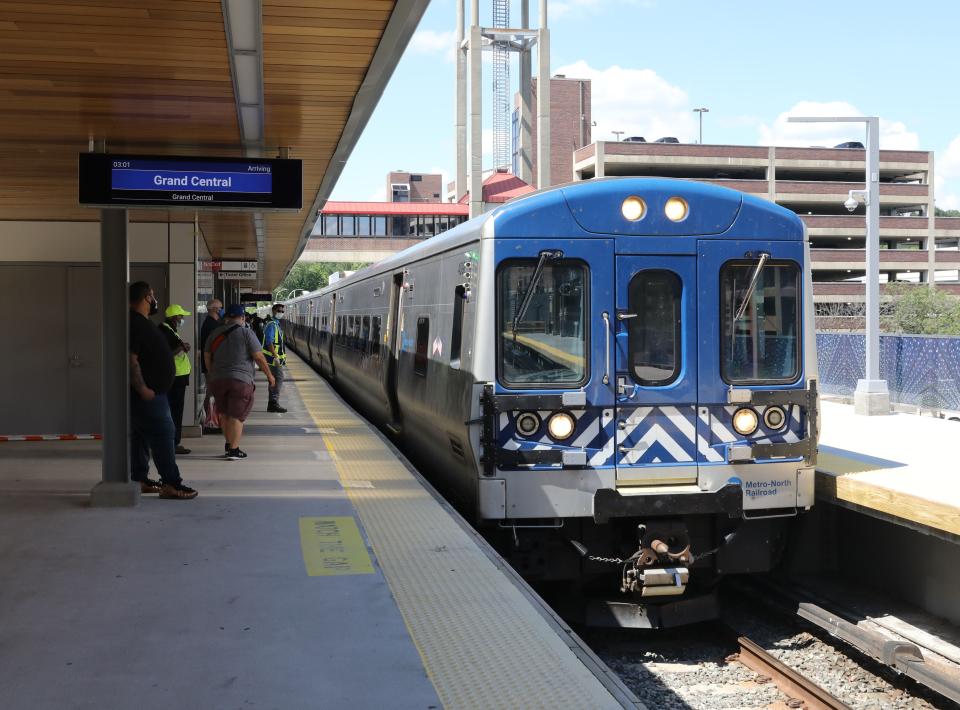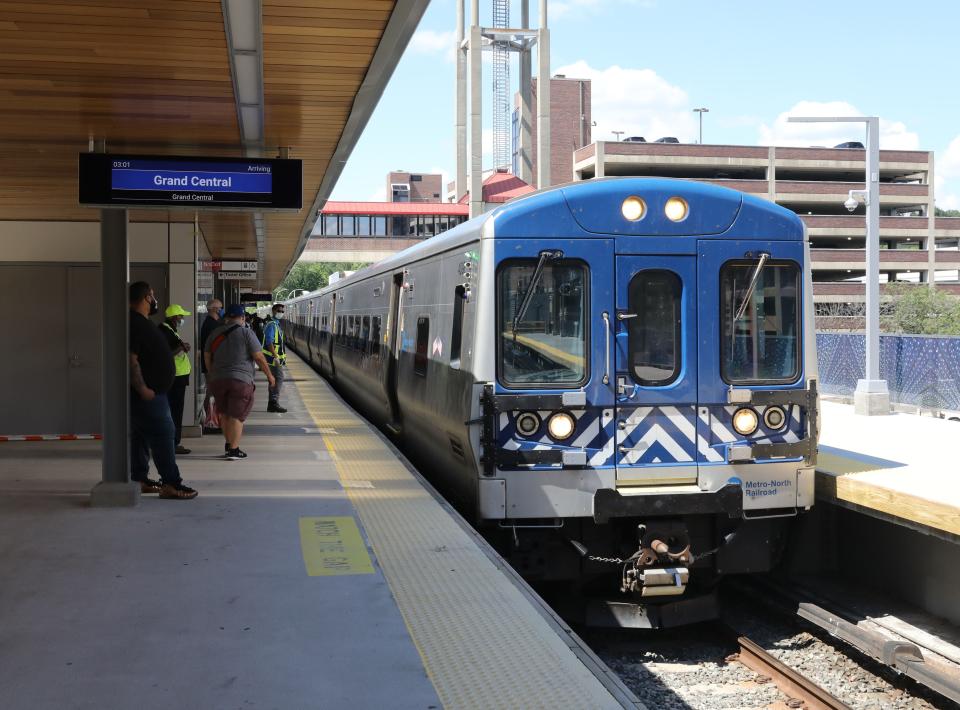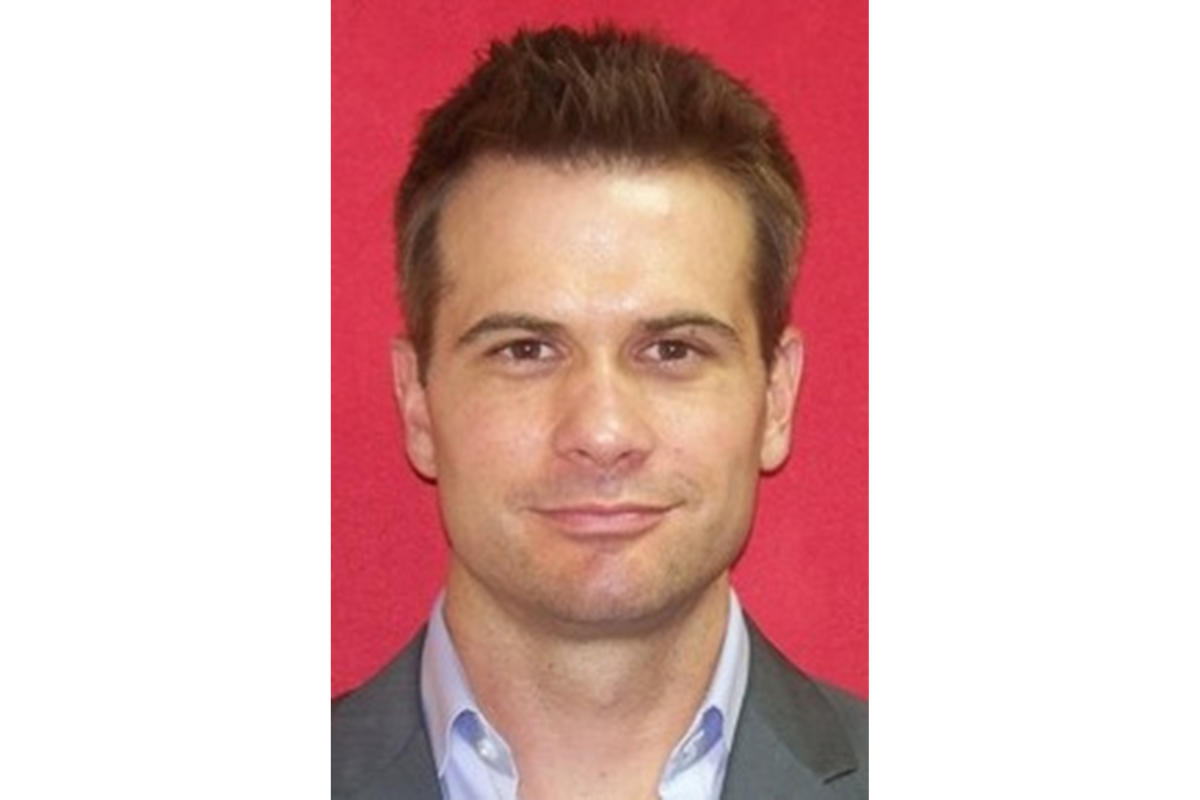Metro-North Railroad plans to spend $6 billion over the next five years to replace 40-year-old railcars, rehabilitate aging platforms and harden hundreds of miles of track to withstand extreme weather that’s occurring with greater frequency.
The funding will come out of a record $68.4 billion, five-year capital spending plan unveiled Wednesday by Metro-North’s parent agency, the Metropolitan Transportation Authority. It will be voted on by the MTA board at its next meeting on Sept. 25.
Topping the railroad’s wish-list is the continued replacement of 1980’s-era M3 railcars with 150 state-of-the art models on the Harlem and Hudson lines.

The M3’s arrived in 1984 soon after Metro-North took over from Conrail and are more prone to breakdowns as they age. M8 models introduced in 2023 have an average mean distance of nearly 900,000 miles between failure, a rate six times better than the M3’s, the railroad says.
Nearly $1.7 billion of Metro-North’s $6 billion allocation will go toward replacing the railroad’s rolling stock, which totals 912 railcars.
Verdict: Deadliest crash in Metro-North history happened at Valhalla crossing. Is it safer today?
Will all projects be funded?
It remains unclear how much of the capital plan will receive funding following Gov. Kathy Hochul’s decision in June to pause a congestion-pricing toll plan that would have delivered some $1 billion annually to MTA capital projects.
Commuter groups continue to press the governor to back off her opposition to a plan to toll drivers entering Manhattan’s business district at 60th Street and below.
“State of good repair – the literal nuts and bolts of maintaining the system – should always come out on top, but we are wondering what’s left on the cutting room floor that would have benefited riders thanks to Governor Hochul’s pause?,” said Lisa Daglian, the executive director of the Permanent Citizens Advisory Committee for the MTA.

On Wednesday the governor vowed to press the federal government to deliver more infrastructure dollars to the MTA, while working with state and city lawmakers “to determine priorities and capacity during the upcoming budget negotiations.”
“From the moment I took office, I’ve fought for public transit — advancing major projects like the Second Avenue Subway and rescuing the MTA from the ‘fiscal cliff’ last year. We will review the MTA’s proposal for the upcoming 5-year capital plan and fight to secure as much funding as possible,” Hochul said.
Some $47.8 billion will go to fix New York City’s subways and buses. Metro-North’s $6 billion share would equal the total for the Long Island Rail Road, its sister commuter rail.
In addition to new M9A cars on the Harlem and Hudson lines, locomotives will be added on West of Hudson lines, which serve customers in Orange and Rockland counties.
Ferry: After backlash, MTA offers discounts for Lower Hudson Valley ferry, bus passengers
And another $959 million will go to replace aging station platforms, upgrades to elevators and ramps, improved parking, and accessibility.
Of concern are platforms at stations on the Harlem Line, where 19 of the 36 are in poor or marginal condition. Several concrete platforms built in the 1980s have a hollow core susceptible to deterioration from salt and freezing temperatures. A dozen stations will be upgraded under the new plan, in addition to three fixed in the MTA’s previous $55 billion five-year plan.
Another $1.7 billion will be spent fixing nearly 800 miles of Metro-North track in the state, 313 overhead bridges, 189 culverts and nine tunnels.

Fixing flooded track
Drainage issues remain an ongoing problem for the nation’s second busiest commuter rail, which in recent years has been been forced to deal with service disruptions caused by storm damage and torrential rain.
In the aftermath of Hurricane Ida in August 2021, service on parts of the Hudson Line was knocked out for days after rain fell at a rate of three inches per hour, washing out backyards in Yonkers and covering track below in in mud, trees and debris.
Mud: Cleaning up after Hurricane Ida proves a costly problem for Metro-North, Yonkers
During Hurricane Sandy in 2012, water from the Hudson River submerged platforms at stations in Tarrytown and Riverdale.
The railroad’s ridership topped 60 million in 2023.
Thomas C. Zambito covers energy, transportation and economic growth for the USA Today Network’s New York State team. He’s won dozens of state and national writing awards from the Associated Press, Investigative Reporters and Editors, the Deadline Club and others during a decades-long career that’s included stops at the New York Daily News, The Star-Ledger of Newark and The Record of Hackensack. He can be reached at tzambito@lohud.com.
This article originally appeared on New York State Team: Metro-North plan for railcars, track upgrades to be voted by MTA board
EMEA Tribune is not involved in this news article, it is taken from our partners and or from the News Agencies. Copyright and Credit go to the News Agencies, email news@emeatribune.com Follow our WhatsApp verified Channel




